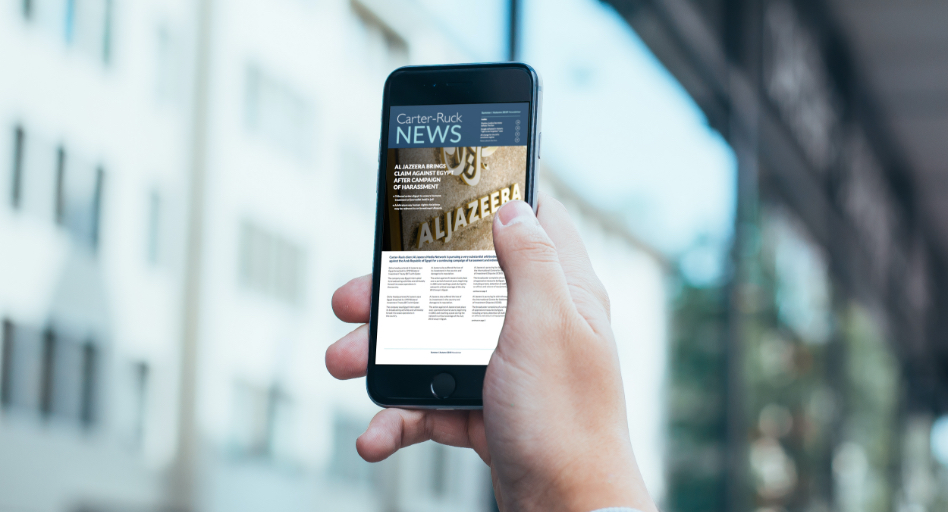
A new battlefield
For decades, military strategists have argued that the next battlefield may be our brains, with informational war emerging as a key component of modern combat. That time may now have arrived, with many of the deception techniques fit for warfare spilling over into the civilian sphere.
This is a culmination of decades-long processes. Advertisers, psychologists and behavioural economists have been figuring out how to influence people by exploiting personal data harvested by consumer tech companies. Governments defending their informational infrastructure have realised the potential for asymmetrical information warfare by unleashing armies of online trolls. All of these efforts have now come together, and the battlefield is global.
From Macedonia to the mainstream
Take the small town of Veles in Macedonia as an example; it’s not exactly a household name, and its 40,000 inhabitants are mostly poor. But as implausible as this may now seem, it could have been Veles that helped Donald Trump get elected as the 45th President of the United States of America. For it was here, back in 2016, that at least 140 websites were based, supplying a constant stream of information in support of Donald Trump’s candidacy.
It was from websites and social platforms based in Veles that Godfearing American voters first got the joyful news about the Pope’s decision to endorse Donald Trump as the next US president. And it was from Macedonia that they first heard of Hillary Clinton’s use of a pizza restaurant for a variety of sexual crimes, as well as the shocking news that some of the Democratic candidate’s closest associates committed suicide on the eve of the presidential ballots to avoid being found out.
Not only was all this a pack of lies, but millions of Americans who either believed or reacted to the information didn’t have the slightest idea that it was generated by people who lived thousands of kilometres away from America’s shores, and was peddled around the world by internet operators who didn’t speak a word of English.
Nor is this an exclusively American story. When in September 2014 the people of Scotland rejected the option of becoming independent from the rest of the United Kingdom, a number of websites instantly produced “proof” that the voting was rigged. A petition asking for a recount of the ballots gained hundreds of thousands of signatures before the entire affair was exposed as a hoax.
Two years ago, news emerged in Germany that Lisa, a Russian girl of 13, was gang-raped by Muslim immigrants. The horrific crime – it was said – was covered up by politically-correct German police. The story, which within days notched up more than a million views on Facebook alone, prompted a wave of indignation. Hundreds of Germans converged on their parliament holding placards proclaiming “Our children are in danger” or “Hands off my child”, and Russian officials formally raised the matter with the German authorities. Except the story was a pure fabrication. No such incident happened, and the unfortunate Lisa never existed.
And last year, just as Emmanuel Macron appeared to be coasting to victory in France’s 2017 presidential elections, the story emerged that he was gay: pictures of the president to-be and his “boyfriend” circulated on most social websites. Yet again, pure rubbish. Welcome to the strange world of Fake News, a parallel universe which, if not checked, threatens to undermine confidence in our institutions and order.
What’s new about Fake News?
When discussing the scale and impact of “Fake News”, it is worth bearing in mind that the term itself has become very controversial. It is at best a catch-all name for very distinct operations. It covers differing motives, political and strategic, commercial, or even sophisticated pranks. And it covers a range of practices, some of which were well-known long ago, while others are new products of the digital revolution.
The concept of Fake News also describes a small but very worrying group of “weaponised” communication technologies, brought into today’s internet reality from the dusty corridors of the Cold War. These could be more dangerous today than their creators ever imagined.
Yet when all is said and done, the peculiarity of Fake News is not deception and lies as such, but the intentional use of such practices in strategic mass communication campaigns, deploying a dangerous combination of social media, computer software, mathematical algorithms and sophisticated advertising techniques.
Do-it-yourself deception
Until relatively recently, the main method of disseminating information was paper.
We all knew the difference between a well-printed broadsheet, edited by a staff of hundreds, produced by thousands of print workers and distributed by tens of thousands of commercial agents, and a photocopied sheet of paper, usually in an awkward typeface, thrust in our hands by a street peddler or demonstrator, or shoved in our post box. We instinctively knew that one was likely to be more reliable than the other.
As for broadcast media, with audio or moving images, these could be produced only by very large institutions, by states or the biggest media businesses.
Yet the advent of the internet has removed the established media’s exclusivity. Anyone can generate content and, at least at first sight, a website created by a teenager in his or her bedroom can look as professional as The Times. While one aspect of this technological change is positive – it empowers people to be creative and allows literally anyone to access and address a world audience almost cost-free – electronic platforms have also become powerful instruments of propaganda.
In Europe, up to a quarter of the population now gets its news exclusively from internet platforms, so information is a commodity sold at ever-cheaper prices. A recent survey from the Reuters Institute for the Study of Journalism combined with further analysis from the Oxford Internet Institute, both based at Oxford University, have shown that even when people get their information from established media sources, it comes to them through news aggregator platforms such as Facebook or Google. The survey showed less than half the readers were aware of the information’s original source.
At the same time, readers scan news aggregator platforms for headlines and read stories regardless of where they come from, so someone reads a story about a natural disaster in Argentina as it is being reported by a website in Nigeria. Consumers start thinking all this information is generated and supplied for free, and that it does not matter whether you read about the political situation in Venezuela from a news outlet in Spain, a country with a democratic tradition, or a news outlet in Cuba, where all sources of information are state controlled and financed.
The result is a vicious circle: established media brands erode, entry barriers to new suppliers of information decline, purveyors of Fake News become ever more credible.
The technology of disinformation
And if this were not enough, technology means that purveyors of Fake News can reach huge audiences. Software can create social media accounts by their hundreds of thousands. For example no less than 150,000 such accounts operated in Britain in 2016, during the EU referendum campaign.
These spoof accounts on Facebook and Twitter not only churn out false news but also recycle false information, giving it “traction”, and the more a story appears on social media, the more credible it appears.
This huge technological power pays no attention to national frontiers or regulations, and is just in its infancy. Newly emerging digital manipulation technologies can also make false information look real, by supplying doctored videos showing real people saying invented things or performing invented actions.
In the 2016 US presidential elections, websites alleged that Hillary Clinton said certain things. By the time the next US presidential ballots take place, candidates will be “seen” to be making statements which appear real, via faked images in hi-tech doctored videos.
State-sponsored disinformation
Most worrying is the growing body of evidence suggesting that governments of certain countries around the world are now actively engaged in using Fake News as a weapon. Of course, this is not entirely new. Britain, for instance, established a “Ministry of Information” exactly a century ago with the purpose of putting out propaganda. Almost every major country subsidised radio stations that broadcast to the world with the same intention.
But, yet again, the scale of Fake News is much bigger — up to 40 percent of the entire news volume circulating in the US media prior to the 2016 presidential elections was fake. And the ability of foreign governments to disguise their identity has also grown. From the indictment issued in March 2018 by Robert Mueller, the American special counsel investigating the latest presidential elections, it emerges that agents in the pay of the Russian government spent years establishing a US presence, complete with fake financial transactions to appear as purely American entities in the run-up to the presidential ballots.
Russia’s splendidly-named “Internet Research Agency” which employed hundreds of people during the past few years and operated tens if not hundreds of thousands of accounts on Twitter, Facebook and other websites, is only the best-documented government effort. One can be certain that other governments around the world have similar organisations, and plenty are studying the potential of Fake News to undermine their opponents.
Restoring trust
There is a lot to suggest that the deeper purpose of inter-state Fake News campaigns is not just to influence this or that vote, but to discredit a rival’s political system, undermining its democratic institutions, in particular confidence in citizens’ sources of information.
And that seems to be working: in Britain, the percentage of those saying that the news they get can be trusted has dropped from 50 percent to only 43 percent last year, while in the US the figure is only 35 percent.
In most cases, the institutions that are losing trust are not internet bots or social platforms, but those which used to enjoy it the most: mainstream, established media, now increasingly viewed as indistinguishable from much of the low quality content which goes by the name of news online.
Countering this won’t be easy: legislation allowing governments to close down websites or social platform accounts can be indistinguishable from censorship, and may be self-defeating, since most national restrictions can be bypassed by the ingenuity of the ever-evolving technology. Still, that does not mean that legislators and governments are bereft of options, although none will be fool proof.
- One approach is the development of enhanced government intelligence capabilities, able to spot trends in the internet and blogosphere. That will give decision-makers early warning of impending Fake News campaigns, and allow useful lead time for rebuttal. Many big companies already have such units to protect them from fake campaigns about their products, and the Foreign and Commonwealth Office in London now has a unit which does exactly the same for British decision-makers.
- Another option is strict regulation during electoral campaigns to diminish the impact of Fake News. It is clear, for instance, that French rules which prevent the publication of any electorally-relevant information 24 hours before ballot day insulated President Emmanuel Macron from the assault based on his stolen personal emails; the same happened in Italy during the country’s recent elections. And the EU was spurred to action to limit the impact of Fake News in the run up to the 2018 elections to the European parliament.
- But the most important measure which governments can take is to force internet providers and the owners of social platforms to share responsibility for the information they carry. Just as newspapers are responsible before the law for the material they publish, so should the online-based companies be which, after all, make their money from the same content for which they claim to carry no responsibility.
To be sure, all these regulations carry risks to individual freedom of expression. But the only other option, which is to allow a free-for-all, carries even greater dangers.
Without being able to agree on shared verifiable facts, there can be no legitimacy in public debate, and little informed decision-making. And without being able to distinguish between fact and fiction, more young men and women may volunteer for violence: Fake News is one of the biggest drivers of radicalisation and terrorism.
The public in most countries seem to get it: in a recent survey compiled by the European Union’s statistical agency Eurobarometer, 83 percent of Europeans surveyed accepted that Fake News represents an existential threat to their way of life. The more fragile and recent their democratic institutions were, the more the people of those countries feared Fake News.
We know this phenomenon is corrosive to our institutions; we just don’t yet seem to be able to forge a consensus about what needs to be done to contain or counter-act it.


